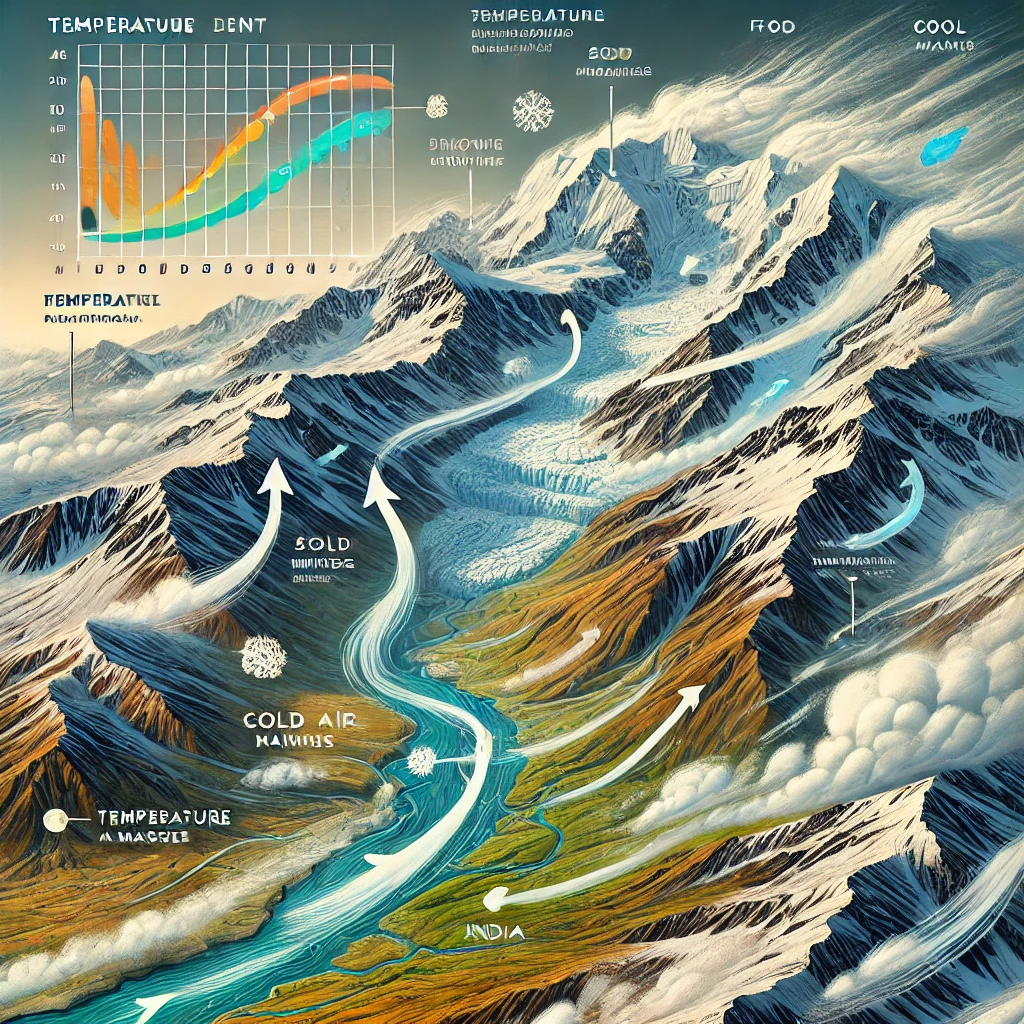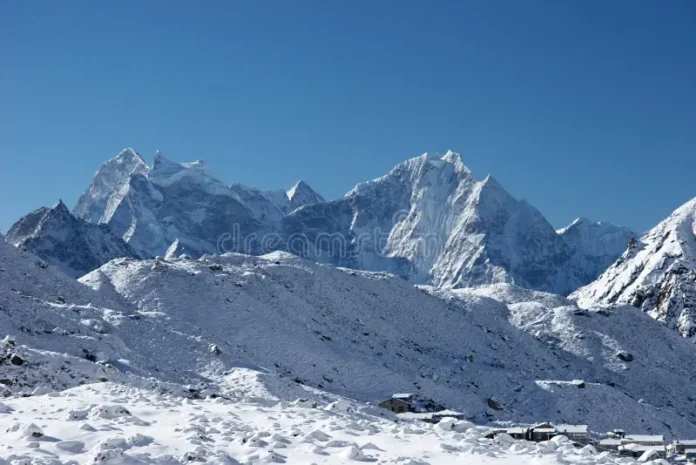Snow on Himalayas: You must have heard people saying that snowfall in the mountains signals colder days ahead for the plains. But have you ever thought about how snowfall, happening hundreds of kilometers away, impacts areas like Delhi, Punjab, Uttar Pradesh, and Haryana? Here’s the science behind this phenomenon.
Table of Contents
1. The Special Role of Winds
Winds play a significant role in bringing cold air from mountainous regions like the Himalayas to the plains. The Himalayas in northern India act as a barrier, stopping icy winds from China and Russia. However, they cannot block winds arriving from the west. These winds pass through Pakistan and Afghanistan instead of the Arabian Sea, making their impact more noticeable in North India. Originating from the Mediterranean Sea, these winds carry moisture, which influences the weather from the Himalayas to the plains. While these winds bring rainfall to the plains, they cause heavy snowfall in the Himalayan regions, leading to a sharp drop in temperatures.
2. The Rule of Wind Flow

There’s a basic principle governing the flow of winds. Colder winds always move to replace warmer air, as hot air is lighter and rises upward, leaving space for the denser, cold air to take its place. After snowfall begins in the mountains, the temperature there drops significantly. This leads to the formation of dense, icy winds that flow toward the warmer plains. Consequently, as December sets in, the plains start experiencing the chill brought by these cold winds.
Geographical Visualization of Wind Flow
To understand how Himalayan snowfall impacts the plains, it’s crucial to visualize the geographical connection. Cold winds originate from the snow-covered peaks of the Himalayas and travel down to the plains, passing through regions like Punjab, Haryana, and Uttar Pradesh. The map illustrates this flow, showing the direct impact of mountain weather patterns on the lower altitudes.

This visualization helps explain the journey of icy winds and why their effect is particularly strong in North India during winter.
3. How Quickly Do Winds Show Their Impact?
Does the cold from Himalayan snowfall immediately impact the plains? Not exactly. It typically takes one to two days for the cold winds to travel from the mountains to the plains. Once these winds arrive, they trigger cold waves and a marked drop in temperature in areas like Delhi, Punjab, and Uttar Pradesh.
Travel Time of Winds: Cold winds originating from the Himalayas take about 24 to 48 hours to reach the plains, depending on wind speed and weather conditions.
Cold Wave Trigger: Upon arrival, these winds cause a sudden drop in temperature, leading to cold wave conditions in the affected regions.
Moisture Content Impact: If the winds carry moisture, they can also lead to light rainfall or fog, further enhancing the chilling effect in the plains.
Temperature Gradient: The sharp temperature difference between the mountains and plains intensifies the effect, making the plains colder than usual.
Prolonged Impact: Once these winds settle in the plains, they can maintain cold wave conditions for several days, intensifying the winter chill.
So, the next time you hear about snowfall in the Himalayas, you’ll know exactly why the plains are about to feel the chill!
Impact on Agriculture and Daily Life
The cold waves resulting from Himalayan snowfall significantly impact the agriculture and daily lives of people in the plains. Frost and sudden temperature drops can damage crops like wheat and mustard, leading to delayed harvests and reduced yields. Farmers also face challenges in irrigation as water sources may freeze or become less accessible.
In daily life, the increased cold leads to higher energy consumption for heating, disruption of transportation due to dense fog, and health risks such as hypothermia or respiratory issues. These factors highlight the broader socio-economic impact of weather changes triggered by Himalayan snowfall.
Climate Change Angle
Climate change is altering weather patterns across the globe, including snowfall in the Himalayas and its impact on the plains. Rising global temperatures may reduce the frequency and intensity of snowfall, potentially changing the flow of cold winds. Alternatively, climate change could intensify these cold waves due to shifting atmospheric conditions and unexpected weather events.
This unpredictability not only impacts winter temperatures but also has long-term implications for agriculture, water availability, and urban planning in the affected regions. Understanding this angle is crucial to mitigating risks and adapting to changing climate conditions.

